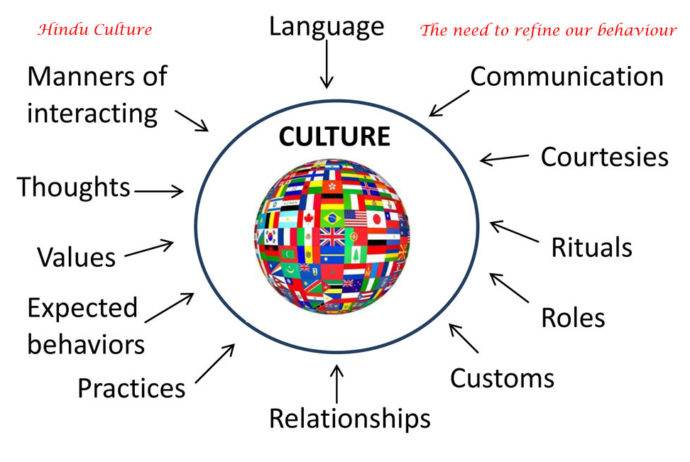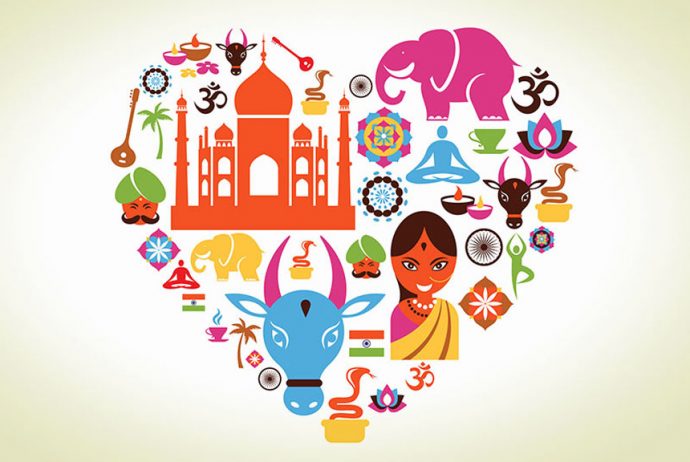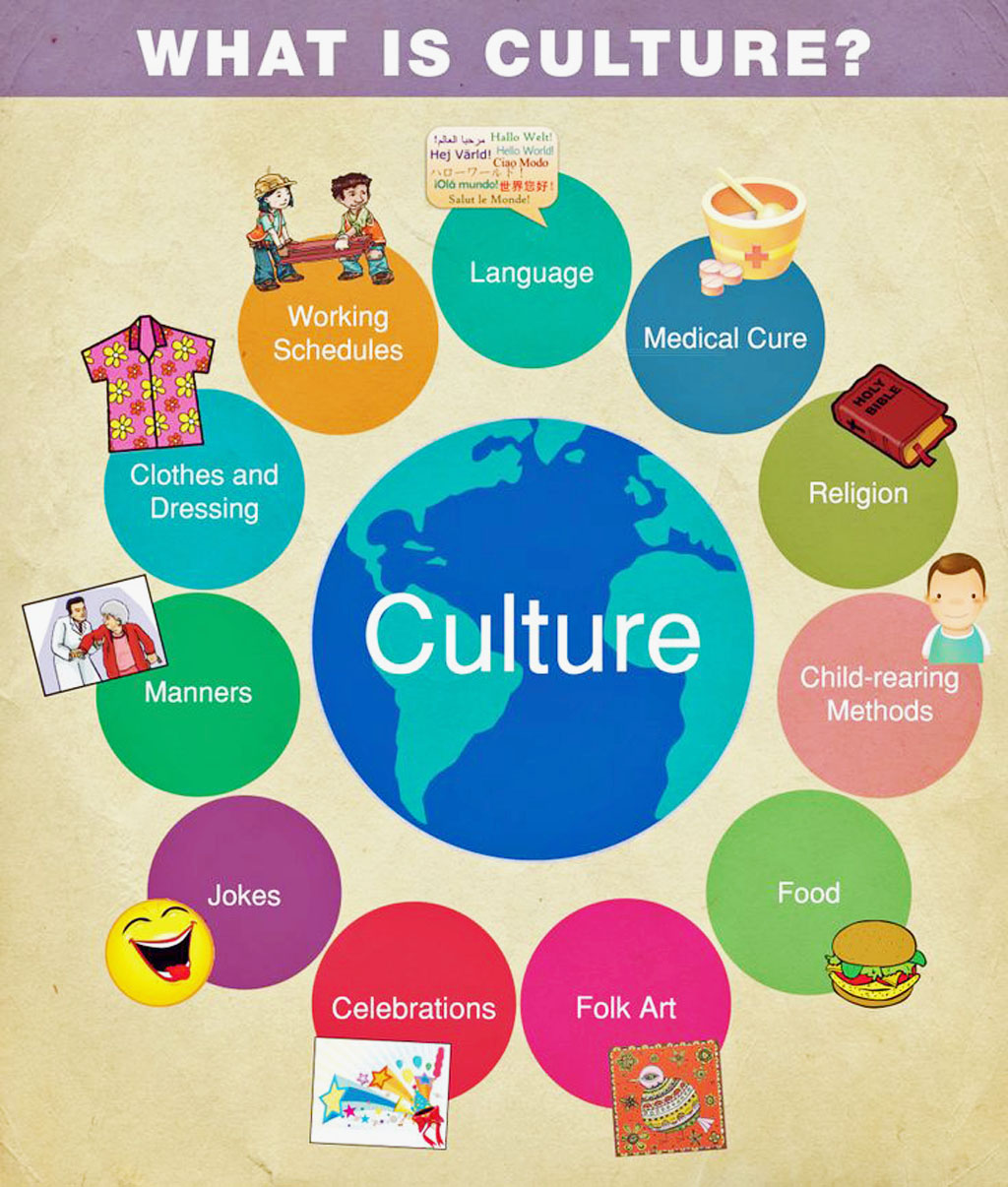Two kinds of Culture
Hindu Culture
The Definition of Culture
Talks by Swami Tejomayananda
A question is asked : how many different kinds of culture are there?
There are many communities and nations and each one has its own culture our tradition. Nevertheless we mainly divide our classify these cultures into two general groups : spiritual culture and material or materialistic culture. These words will also have to be understood very carefully.
In Sanskrit, spiritual culture is called “adhyatmic samskriti“, and materialistic culture is known as “bhautic samskriti“.
These terms are often and misunderstood, for we generally think that materialistic culture means to go on enjoying – just to eat drink and be merry! But this is a very superficial way of looking at it. At the same time, people have the notion that to be spiritual one has to renounce everything, to run off to the Himalayas and just sit there! So one person is saying, “enjoy the world” and the other is saying, “Escape! Run away from this world. Everything in it, is bad. Go somewhere far away and contemplate.”
Others have the notion that spiritual culture is very good, but materialism is very bad – that the people of a particular culture and their country are bad. Each person becomes proud of his own culture. The follower of the materialistic culture who does not fully understand spiritual culture says “you people are just getting poorer and poorer, your culture is useless.” Then those of the spiritual nature say to the materialist,” you are only running after objects, going through stress and strain, tension, and temptation. What kind of a life is that?” So each person thinks his own culture is superior. Most people do not have a clear understanding of what material culture and spiritual culture really mean, for it is not that one is good and the other is bad.
Some teenagers and youngsters say, “Oh, we know what spiritual culture is : when you see an elderly person, you must prostrate to him. That is called spiritual culture – prostration, salutation,.” And some parents insist insist on it so much that they push the child’s head down to touch to the elders feet; and the child just thinks,” why should I smell his feet?” Is this what spiritual nature is?
In Sanskrit, the term “bhautic vaada” (materialism) comes from the word bhuta,”Element”; “bhautic” means elemental. One generally takes as real only that which is directly in front of one’s eyes, which is tangible and in a material form. The philosophical basis of “bhautic vaada” is : seeing is believing”. Thus, whatever I see is real. Perception of the material tangible world is given complete validity and reality, and something that is not seen or known, for it is not verifiable by scientific experiment in the laboratory, is not accepted as real. Materialism means faith in matter, the physical things that are perceived by our senses. That this is why some people who have studied only a little bit of science say,” What is religion? Religion is only a matter of faith, and you are just accepting what you do not see.”
I met a man of few days ago in Washington DC who, while a student in Delhi, had met Dr. Radhakrishnan, the then Vice President of India. He had asked Dr. Radhakrishnan a question : “Sir, since you are a great philosopher, can you explain the difference between science and religion, as there seems to be a contradiction between the two? Religion speaks of something that is not seen, and people have faith in that. But in science one says,”No, I only accept what I see,” so it appears that scientists are anti-religious.”
Dr. Radhakrishnan gave a very nice answer. He said,” it is something like this : a little science takes you away from religion but more of it takes you near religion.” Dr. Radhakrishnan meant that those students who have studied only a little bit of science – atomic physics, particle physics and so on, speak of religion and God in derogatory terms. Einstein would not agree with this negative view, as is evident from his writings.
Thus the materialist has faith in, and bases his life upon, the supposed validity and the reality of seen things, whereas spiritual philosophy says,”Yes, whatever is seen is fine, But do not think that truth is only that which is seen by the senses.” There are many things that exist even though you cannot see them. Sense perception is not the only valid means of knowing what is it real. Through the senses we can only observe objects of the world, but there are things that lie beyond sense perception, and different means exist for knowing them.





